
The Library provides the Texas A&M School of Law students, staff, and faculty with antiracism books in both print and eBook formats, including the following listed resources. You will be prompted to enter your Texas A&M credentials to access these materials.
Use the Law Library catalog (see search box below), the Lexis Digital Library, TAMU Google Scholar, and the University Libraries catalog (electronic materials and eBooks are available to members of the Law School) to search for these and additional antiracism resources.
This guide will help users learn more about antiracism resources available through the Texas A&M University School of Law Library.
You may be prompted to enter your Texas A&M University credentials to gain access to certain materials.
This guide was revised to comply with Texas Senate Bill 12 in accordance with the Texas A&M University System compliance requirements and guidance.
Recommended Citation:
Malikah Hall, Lisa Goodman, Cynthia Burress, Kristen Rowlett, & Jamie Madison, Antiracism Resources (July 30, 2020), https://doi.org/10.37419/antiracism
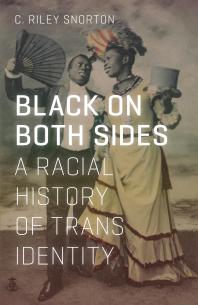
In Black on Both Sides, C. Riley Snorton identifies multiple intersections between blackness and transness from the mid-nineteenth century to present-day anti-black and anti-trans legislation and violence.
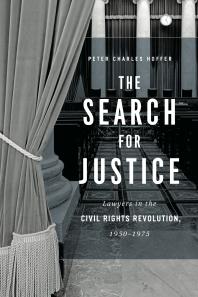
The Search for Justice is a look at the role of the lawyers throughout the period, focusing on one of the central issues of the time: school segregation. .

The author gathers stories of legal maneuvers and memories of racial injustices from 26 voices, white and black, male and female, who share their own defining moments as civil rights lawyers.
A timely examination of how Black women, Indigenous women, and women of color experience racial profiling, police brutality, and immigration enforcement.
Narrating the story of a sea-change in housing policy and its dire impact on African Americans, Race for Profit reveals how the urban core was transformed into a new frontier of cynical extraction.
Elizabeth Hinton traces the rise of mass incarceration to an ironic source: the social welfare programs of Lyndon Johnson's Great Society at the height of the civil rights era.

Available via Lexis Digital Library: Utilizing narratives of black female lawyers, this book offers a blend of accessible theory to benefit any reader willing to learn about the underlying challenges that lead to their high attrition rates.

Available via Lexis Digital Library: When Samuel Battle broke the color line as New York City's first African American cop in the second decade of the twentieth century.
Despite the triumphant dismantling of the Jim Crow laws, the system that once forced African-Americans into a segregated second-class citizenship still haunts and the criminal justice system.
On Account Of Race tells the story of an American tragedy, the only occasion in United States history in which a group of citizens who had been granted the right to vote then had it stripped away.
Guides readers of all races through subjects ranging from intersectionality and affirmative action to "model minorities" in an attempt to facilitate honest conversations about race and racism.
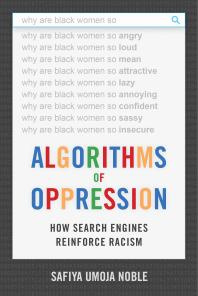
Argues that the combination of private interests in promoting certain sites, along with the monopoly status of a relatively small number of Internet search engines, leads to a biased set against people of color.
In How to Be an Antiracist, Ibram X. Kendi asks us to think about what an antiracist society might look like, and how we can play an active role in building it.
Undocumented immigrants in the United States who engage in social activism do so at great risk: the threat of deportation. The author shows why and how, despite this risk, many of them bravely continue to fight on the front lines for their rights.

Available via Lexis Digital Library: Why does the presence of Others make us so afraid? America's foremost novelist reflects on themes that preoccupy her work and dominate politics.
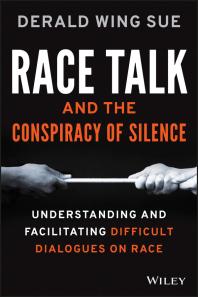
It's important that people have the ability to converse openly and honestly with their students, colleagues, children, and neighbors, and Race Talk provides the path for achieving this goal.

Pushout challenges the policies, practices, and cultural illiteracy that push countless students out of school and into unhealthy, unstable, and often unsafe futures.
Provides practical tools & advice on how white people can work as allies for racial justice including questions, exercises, and suggestions for action.
Four partners of color from leading law firms use their own journeys to the top to discuss how law firms can hold on to a more diverse set of young attorneys.
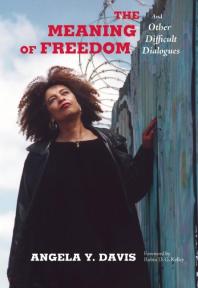
Addresses examples of institutional injustice and explores the radical notion of freedom as a collective striving for real democracy.
Critical Race Theory is essential for understanding developments in this burgeoning field, which has spread to other disciplines and countries.
A personal examination of one of the central controversies and culturally powerful issues of our time, and its influence on contemporary race relations and criminal justice.
In this deeply researched and fast-moving narrative, Kendi chronicles the entire story of anti-black racist ideas and their staggering power over the course of American history.

Available via Lexis Digital Library: Here are true stories of law-abiding Americans who also happen to be black men who have experienced discrimination and police intimidation.(Publishers Weekly).

This vital collection outlines how issues such as profiling, wealth inequality, and housing segregation relate to race and policy decisions at both the local and national levels.
Unequal Profession explores how the race and gender of individual legal academics affect not only their individual and collective experience but also legal education as a whole.
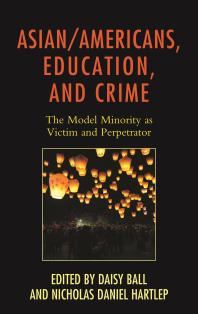
The characterization of Asian/Americans’ as the “model minority” masks the victimization and violence they experience in the twenty-first century.
Drawing on eight years of immersive investigation, Sierra Crane Murdoch has produced a profound examination of the legacy of systematic violence inflicted on a tribal nation and a tale of extraordinary healing.
Traces the history of racial discrimination in American law from colonial times to the present, analyzing the key court cases that established America’s racial system and showing their impact on American society.
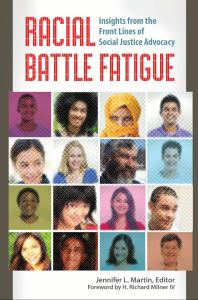
Sharing personal stories of challenges, aggressions, retaliations, and finally, racial battle fatigue, these activists, practitioners, and scholars explain how they have been attacked.
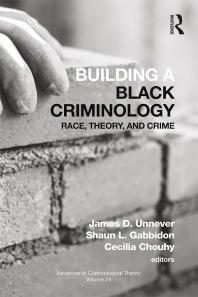
Discusses the historical racial oppression experienced by African Americans including concentrated disadvantage in segregated communities and disproportionate involvement in and unjust treatment by the criminal justice system.
Explores the counterproductive reactions white people have when their assumptions about race are challenged, and how these reactions maintain racial inequality.

Author analyzes the legal history, constitutionality, conflicting laws, political, and life chance consequences of felon disenfranchisement laws on African American felons and the African American community.
Explores the causes, manifestations, and consequences of microaggressions, macroaggressions, and modern racism within society.
The Combahee River Collective, a group of radical black feminists, was one of the most important organizations to develop out of the anti-racist and women's liberation movements of the 1960s and 70s.
Shannon Sullivan identifies how white middle-class goodness, an orientation she critiques for being more concerned with establishing anti-racist bona fides than with confronting systematic racism and privilege is problematic.

In Black on Both Sides, C. Riley Snorton identifies multiple intersections between blackness and transness from the mid-nineteenth century to present-day anti-black and anti-trans legislation and violence.

The Search for Justice is a look at the role of the lawyers throughout the period, focusing on one of the central issues of the time: school segregation. .

The author gathers stories of legal maneuvers and memories of racial injustices from 26 voices, white and black, male and female, who share their own defining moments as civil rights lawyers.
A timely examination of how Black women, Indigenous women, and women of color experience racial profiling, police brutality, and immigration enforcement.
Narrating the story of a sea-change in housing policy and its dire impact on African Americans, Race for Profit reveals how the urban core was transformed into a new frontier of cynical extraction.
Elizabeth Hinton traces the rise of mass incarceration to an ironic source: the social welfare programs of Lyndon Johnson's Great Society at the height of the civil rights era.

Available via Lexis Digital Library: Utilizing narratives of black female lawyers, this book offers a blend of accessible theory to benefit any reader willing to learn about the underlying challenges that lead to their high attrition rates.

Available via Lexis Digital Library: When Samuel Battle broke the color line as New York City's first African American cop in the second decade of the twentieth century.
Despite the triumphant dismantling of the Jim Crow laws, the system that once forced African-Americans into a segregated second-class citizenship still haunts and the criminal justice system.
On Account Of Race tells the story of an American tragedy, the only occasion in United States history in which a group of citizens who had been granted the right to vote then had it stripped away.
Guides readers of all races through subjects ranging from intersectionality and affirmative action to "model minorities" in an attempt to facilitate honest conversations about race and racism.

Argues that the combination of private interests in promoting certain sites, along with the monopoly status of a relatively small number of Internet search engines, leads to a biased set against people of color.
In How to Be an Antiracist, Ibram X. Kendi asks us to think about what an antiracist society might look like, and how we can play an active role in building it.
Undocumented immigrants in the United States who engage in social activism do so at great risk: the threat of deportation. The author shows why and how, despite this risk, many of them bravely continue to fight on the front lines for their rights.

Available via Lexis Digital Library: Why does the presence of Others make us so afraid? America's foremost novelist reflects on themes that preoccupy her work and dominate politics.

It's important that people have the ability to converse openly and honestly with their students, colleagues, children, and neighbors, and Race Talk provides the path for achieving this goal.

Pushout challenges the policies, practices, and cultural illiteracy that push countless students out of school and into unhealthy, unstable, and often unsafe futures.
Provides practical tools & advice on how white people can work as allies for racial justice including questions, exercises, and suggestions for action.
Four partners of color from leading law firms use their own journeys to the top to discuss how law firms can hold on to a more diverse set of young attorneys.

Addresses examples of institutional injustice and explores the radical notion of freedom as a collective striving for real democracy.
Critical Race Theory is essential for understanding developments in this burgeoning field, which has spread to other disciplines and countries.
A personal examination of one of the central controversies and culturally powerful issues of our time, and its influence on contemporary race relations and criminal justice.
In this deeply researched and fast-moving narrative, Kendi chronicles the entire story of anti-black racist ideas and their staggering power over the course of American history.

Available via Lexis Digital Library: Here are true stories of law-abiding Americans who also happen to be black men who have experienced discrimination and police intimidation.(Publishers Weekly).

This vital collection outlines how issues such as profiling, wealth inequality, and housing segregation relate to race and policy decisions at both the local and national levels.
Unequal Profession explores how the race and gender of individual legal academics affect not only their individual and collective experience but also legal education as a whole.

The characterization of Asian/Americans’ as the “model minority” masks the victimization and violence they experience in the twenty-first century.
Drawing on eight years of immersive investigation, Sierra Crane Murdoch has produced a profound examination of the legacy of systematic violence inflicted on a tribal nation and a tale of extraordinary healing.
Traces the history of racial discrimination in American law from colonial times to the present, analyzing the key court cases that established America’s racial system and showing their impact on American society.

Sharing personal stories of challenges, aggressions, retaliations, and finally, racial battle fatigue, these activists, practitioners, and scholars explain how they have been attacked.

Discusses the historical racial oppression experienced by African Americans including concentrated disadvantage in segregated communities and disproportionate involvement in and unjust treatment by the criminal justice system.
Explores the counterproductive reactions white people have when their assumptions about race are challenged, and how these reactions maintain racial inequality.

Author analyzes the legal history, constitutionality, conflicting laws, political, and life chance consequences of felon disenfranchisement laws on African American felons and the African American community.
Explores the causes, manifestations, and consequences of microaggressions, macroaggressions, and modern racism within society.
The Combahee River Collective, a group of radical black feminists, was one of the most important organizations to develop out of the anti-racist and women's liberation movements of the 1960s and 70s.
Shannon Sullivan identifies how white middle-class goodness, an orientation she critiques for being more concerned with establishing anti-racist bona fides than with confronting systematic racism and privilege is problematic.

In Black on Both Sides, C. Riley Snorton identifies multiple intersections between blackness and transness from the mid-nineteenth century to present-day anti-black and anti-trans legislation and violence.

The Search for Justice is a look at the role of the lawyers throughout the period, focusing on one of the central issues of the time: school segregation. .

The author gathers stories of legal maneuvers and memories of racial injustices from 26 voices, white and black, male and female, who share their own defining moments as civil rights lawyers.
A timely examination of how Black women, Indigenous women, and women of color experience racial profiling, police brutality, and immigration enforcement.
Narrating the story of a sea-change in housing policy and its dire impact on African Americans, Race for Profit reveals how the urban core was transformed into a new frontier of cynical extraction.
Elizabeth Hinton traces the rise of mass incarceration to an ironic source: the social welfare programs of Lyndon Johnson's Great Society at the height of the civil rights era.

Available via Lexis Digital Library: Utilizing narratives of black female lawyers, this book offers a blend of accessible theory to benefit any reader willing to learn about the underlying challenges that lead to their high attrition rates.

Available via Lexis Digital Library: When Samuel Battle broke the color line as New York City's first African American cop in the second decade of the twentieth century.
Call Number: BF575 .A3 S83 2010 - Row 1A
This book insightfully looks at the various kinds of microaggressions and their psychological effects on both perpetrators and their targets. Thought-provoking and timely, Dr. Sue suggests realistic and optimistic guidance for combating-and ending-microaggressions in our society
Call Number: KF639 .R68 2015 - Row 44B
The First Seminole War shaped how the United States demarcated its spatial and legal boundaries. Rooted in exceptionalism, manifest destiny, and racism, the legal framework that emerged from Andrew Jackson’s invasion of Florida laid the groundwork for the Monroe Doctrine, the Dred Scott decision, and westward expansion, as Deborah Rosen shows.
Call number: HC79 .P6 E92 2018 - Row 2A
Eubanks investigates the impacts of data mining, policy algorithms, and predictive risk models on poor and working-class people in America. She shows how automated systems, rather than humans, control which neighborhoods get policed, which families attain needed resources, and who is investigated for fraud.
Call Number: F704 .T92 M43 2001 - Row 1B
On the morning of June 1, 1921, a white mob numbering in the thousands marched across the railroad tracks dividing black from white in Tulsa, Oklahoma, and obliterated a black community then celebrated as one of America's most prosperous. 34 square blocks of Tulsa's Greenwood community were reduced to smoldering rubble.
Call Number: KF272 .D46 2019 - Row 42B
Comparing the professional and personal experiences of women of color professors with white women, white men, and men of color faculty from assistant professor through dean emeritus, Unequal Profession explores how the race and gender of individual legal academics affects not only their individual and collective experience, but also legal education as a whole.
Call Number: HV6197 .U6 M83 2010 - Row 4A
Khalil Gibran Muhammad chronicles how, when, and why modern notions of black people as an exceptionally dangerous race of criminals first emerged.
Call Number: E184 .S75 F42 2014- Row 1B
Feagin and Cobas provide the first in-depth examination of the everyday racism faced by middle-class Latinos. Based on a national survey, we learn how a diverse group of talented Latinos--Mexican Americans, Puerto Rican Americans, Cuban Americans, and others--respond to and cope with the commonplace white racial framing and discriminatory practices.
Call Number: KF9227 .C2 M37 2019 - Row 70A
A history of the McCleskey v. Kemp Supreme Court ruling that effectively condoned racism in capital cases0In 1978 Warren McCleskey, a black man, killed a white police officer in Georgia. Although McCleskey's lawyers were able to prove that Georgia courts applied the death penalty to blacks who killed whites four times as often as when the victim was black, the Supreme Court upheld the death sentence.
Call Number: E840.8 .L49 A3 1998 Row 1B
Forty years ago, a teenaged boy stepped off a cotton farm in Alabama and into the epicenter of the struggle for civil rights in America, where he has remained to this day, committed still to the nonviolent ideals of his mentor Martin Luther King and the movement they both served. John Lewis's life, which he tells with charm, warmth, and toughness, ranges across the battlefields of the civil rights movement -- Selma, Montgomery, Birmingham, Mississippi.

Call Number: E184 .A1 B37 2007 - Row 1B
With great clarity Barndt traces the history of racism, especially in white America, revealing its various personal, institutional, and cultural forms. Without demonizing anyone or any race, he offers specific, positive ways in which people in all walks, including churches, can work to bring racism to an end.
Call Number: E185.61 .R68 2017 - Row 1B
In this groundbreaking history of the modern American metropolis, Richard Rothstein, a leading authority on housing policy, explodes the myth that America's cities came to be racially divided through de facto segregation--that is, through individual prejudices, income differences, or the actions of private institutions like banks and real estate agencies.
Call Number: E184 .A1 R64 2014 - Row 1B
Legal scholar Daria Roithmayr provocatively argues that racial inequality lives on because white advantage functions as a powerful self-reinforcing monopoly, reproducing itself automatically from generation to generation even in the absence of intentional discrimination.
.
Call Number: E184 .A1 B65 2014 - Row 1B
Eduardo Bonilla-Silva's acclaimed Racism without Racists documents how beneath our contemporary conversation about race lies a full-blown arsenal of arguments, phrases, and stories that whites use to account for--and ultimately justify-- racial inequalities
Call Number: KF336 .V84 2011 - Row 43A
The “Vulnerable Populations and Economic Realities” teaching conference brought together law faculty, practitioners, and students to reexamine how issues of race, gender, sexual identity, nationality, disability, and generally—outsider status—are linked to poverty. Contributors have transformed their presentations into essays, offering a variety of roadmaps for incorporating these issues into the law school curriculum.
Call Number: E185.61 .W345 2018 - Row 1B
A startling and gripping reexamination of the Jim Crow era, as seen through the eyes of some of the most important American writers. In this dramatic reexamination of the Jim Crow South, Anders Walker demonstrates that racial segregation fostered not simply terror and violence, but also diversity, one of our most celebrated ideals.
Call Number: E184 .M5 M64 2014 - Row 1B
How Race Is Made in America examines Mexican Americans from 1924, when American law drastically reduced immigration into the United States, to 1965, when many quotas were abolished{u2014}to understand how broad themes of race and citizenship are constructed.
Call Number: KF373 .S84 A3 2014 - Row 43A
Bryan Stevenson founded the Equal Justice Initiative, a legal practice dedicated to defending those most desperate and in need: the poor, the wrongly condemned, and women and children trapped in the farthest reaches of our criminal justice system. One of his first cases was that of Walter McMillian, a young man who was sentenced to die for a notorious murder he insisted he didn’t commit.
Call number: HV8141 .F47 2017 - Row 4B
The Rise of Big Data Policing introduces the cutting-edge technology that is changing how the police do their jobs and shows why it is more important than ever that citizens understand the far-reaching consequences of big data surveillance as a law enforcement tool.
Call Number: E78 .G73 S25 2009 - Row 1A
Mari Sandoz was as passionate about Plains peoples as she was about language and literary acclaim. The activist's correspondence traces an intimate, long-standing interaction with tribal communities, for whom Sandoz vigorously sought social justice. Sandoz's letters prove her a respectful and responsible ally, sensitive to the communities' best interests and solicitous of Native leaders.
Call Number: KF300 .M947 2013 - Row 43A
Written to make this information bite-size and accessible, you'll find quick answers to typical What should I do? questions, like What if I say the wrong thing, what should I do? What if I am working and someone makes a sexist joke, what should I say?
Call Number: BF575 .A3 S83 2010 - Row 1A
This book insightfully looks at the various kinds of microaggressions and their psychological effects on both perpetrators and their targets. Thought-provoking and timely, Dr. Sue suggests realistic and optimistic guidance for combating-and ending-microaggressions in our society
Call Number: KF639 .R68 2015 - Row 44B
The First Seminole War shaped how the United States demarcated its spatial and legal boundaries. Rooted in exceptionalism, manifest destiny, and racism, the legal framework that emerged from Andrew Jackson’s invasion of Florida laid the groundwork for the Monroe Doctrine, the Dred Scott decision, and westward expansion, as Deborah Rosen shows.
Call number: HC79 .P6 E92 2018 - Row 2A
Eubanks investigates the impacts of data mining, policy algorithms, and predictive risk models on poor and working-class people in America. She shows how automated systems, rather than humans, control which neighborhoods get policed, which families attain needed resources, and who is investigated for fraud.
Call Number: F704 .T92 M43 2001 - Row 1B
On the morning of June 1, 1921, a white mob numbering in the thousands marched across the railroad tracks dividing black from white in Tulsa, Oklahoma, and obliterated a black community then celebrated as one of America's most prosperous. 34 square blocks of Tulsa's Greenwood community were reduced to smoldering rubble.
Call Number: KF272 .D46 2019 - Row 42B
Comparing the professional and personal experiences of women of color professors with white women, white men, and men of color faculty from assistant professor through dean emeritus, Unequal Profession explores how the race and gender of individual legal academics affects not only their individual and collective experience, but also legal education as a whole.
Call Number: HV6197 .U6 M83 2010 - Row 4A
Khalil Gibran Muhammad chronicles how, when, and why modern notions of black people as an exceptionally dangerous race of criminals first emerged.
Call Number: E184 .S75 F42 2014- Row 1B
Feagin and Cobas provide the first in-depth examination of the everyday racism faced by middle-class Latinos. Based on a national survey, we learn how a diverse group of talented Latinos--Mexican Americans, Puerto Rican Americans, Cuban Americans, and others--respond to and cope with the commonplace white racial framing and discriminatory practices.
Call Number: KF9227 .C2 M37 2019 - Row 70A
A history of the McCleskey v. Kemp Supreme Court ruling that effectively condoned racism in capital cases0In 1978 Warren McCleskey, a black man, killed a white police officer in Georgia. Although McCleskey's lawyers were able to prove that Georgia courts applied the death penalty to blacks who killed whites four times as often as when the victim was black, the Supreme Court upheld the death sentence.
Call Number: E840.8 .L49 A3 1998 Row 1B
Forty years ago, a teenaged boy stepped off a cotton farm in Alabama and into the epicenter of the struggle for civil rights in America, where he has remained to this day, committed still to the nonviolent ideals of his mentor Martin Luther King and the movement they both served. John Lewis's life, which he tells with charm, warmth, and toughness, ranges across the battlefields of the civil rights movement -- Selma, Montgomery, Birmingham, Mississippi.

Call Number: E184 .A1 B37 2007 - Row 1B
With great clarity Barndt traces the history of racism, especially in white America, revealing its various personal, institutional, and cultural forms. Without demonizing anyone or any race, he offers specific, positive ways in which people in all walks, including churches, can work to bring racism to an end.
Call Number: E185.61 .R68 2017 - Row 1B
In this groundbreaking history of the modern American metropolis, Richard Rothstein, a leading authority on housing policy, explodes the myth that America's cities came to be racially divided through de facto segregation--that is, through individual prejudices, income differences, or the actions of private institutions like banks and real estate agencies.
Call Number: E184 .A1 R64 2014 - Row 1B
Legal scholar Daria Roithmayr provocatively argues that racial inequality lives on because white advantage functions as a powerful self-reinforcing monopoly, reproducing itself automatically from generation to generation even in the absence of intentional discrimination.
.
Call Number: E184 .A1 B65 2014 - Row 1B
Eduardo Bonilla-Silva's acclaimed Racism without Racists documents how beneath our contemporary conversation about race lies a full-blown arsenal of arguments, phrases, and stories that whites use to account for--and ultimately justify-- racial inequalities
Call Number: KF336 .V84 2011 - Row 43A
The “Vulnerable Populations and Economic Realities” teaching conference brought together law faculty, practitioners, and students to reexamine how issues of race, gender, sexual identity, nationality, disability, and generally—outsider status—are linked to poverty. Contributors have transformed their presentations into essays, offering a variety of roadmaps for incorporating these issues into the law school curriculum.
Call Number: E185.61 .W345 2018 - Row 1B
A startling and gripping reexamination of the Jim Crow era, as seen through the eyes of some of the most important American writers. In this dramatic reexamination of the Jim Crow South, Anders Walker demonstrates that racial segregation fostered not simply terror and violence, but also diversity, one of our most celebrated ideals.
Call Number: E184 .M5 M64 2014 - Row 1B
How Race Is Made in America examines Mexican Americans from 1924, when American law drastically reduced immigration into the United States, to 1965, when many quotas were abolished{u2014}to understand how broad themes of race and citizenship are constructed.
Call Number: KF373 .S84 A3 2014 - Row 43A
Bryan Stevenson founded the Equal Justice Initiative, a legal practice dedicated to defending those most desperate and in need: the poor, the wrongly condemned, and women and children trapped in the farthest reaches of our criminal justice system. One of his first cases was that of Walter McMillian, a young man who was sentenced to die for a notorious murder he insisted he didn’t commit.
Call number: HV8141 .F47 2017 - Row 4B
The Rise of Big Data Policing introduces the cutting-edge technology that is changing how the police do their jobs and shows why it is more important than ever that citizens understand the far-reaching consequences of big data surveillance as a law enforcement tool.
Call Number: E78 .G73 S25 2009 - Row 1A
Mari Sandoz was as passionate about Plains peoples as she was about language and literary acclaim. The activist's correspondence traces an intimate, long-standing interaction with tribal communities, for whom Sandoz vigorously sought social justice. Sandoz's letters prove her a respectful and responsible ally, sensitive to the communities' best interests and solicitous of Native leaders.
Call Number: KF300 .M947 2013 - Row 43A
Written to make this information bite-size and accessible, you'll find quick answers to typical What should I do? questions, like What if I say the wrong thing, what should I do? What if I am working and someone makes a sexist joke, what should I say?
Call Number: BF575 .A3 S83 2010 - Row 1A
This book insightfully looks at the various kinds of microaggressions and their psychological effects on both perpetrators and their targets. Thought-provoking and timely, Dr. Sue suggests realistic and optimistic guidance for combating-and ending-microaggressions in our society
Call Number: KF639 .R68 2015 - Row 44B
The First Seminole War shaped how the United States demarcated its spatial and legal boundaries. Rooted in exceptionalism, manifest destiny, and racism, the legal framework that emerged from Andrew Jackson’s invasion of Florida laid the groundwork for the Monroe Doctrine, the Dred Scott decision, and westward expansion, as Deborah Rosen shows.
Call number: HC79 .P6 E92 2018 - Row 2A
Eubanks investigates the impacts of data mining, policy algorithms, and predictive risk models on poor and working-class people in America. She shows how automated systems, rather than humans, control which neighborhoods get policed, which families attain needed resources, and who is investigated for fraud.
Call Number: F704 .T92 M43 2001 - Row 1B
On the morning of June 1, 1921, a white mob numbering in the thousands marched across the railroad tracks dividing black from white in Tulsa, Oklahoma, and obliterated a black community then celebrated as one of America's most prosperous. 34 square blocks of Tulsa's Greenwood community were reduced to smoldering rubble.
Call Number: KF272 .D46 2019 - Row 42B
Comparing the professional and personal experiences of women of color professors with white women, white men, and men of color faculty from assistant professor through dean emeritus, Unequal Profession explores how the race and gender of individual legal academics affects not only their individual and collective experience, but also legal education as a whole.
Call Number: HV6197 .U6 M83 2010 - Row 4A
Khalil Gibran Muhammad chronicles how, when, and why modern notions of black people as an exceptionally dangerous race of criminals first emerged.
Call Number: E184 .S75 F42 2014- Row 1B
Feagin and Cobas provide the first in-depth examination of the everyday racism faced by middle-class Latinos. Based on a national survey, we learn how a diverse group of talented Latinos--Mexican Americans, Puerto Rican Americans, Cuban Americans, and others--respond to and cope with the commonplace white racial framing and discriminatory practices.
Call Number: KF9227 .C2 M37 2019 - Row 70A
A history of the McCleskey v. Kemp Supreme Court ruling that effectively condoned racism in capital cases0In 1978 Warren McCleskey, a black man, killed a white police officer in Georgia. Although McCleskey's lawyers were able to prove that Georgia courts applied the death penalty to blacks who killed whites four times as often as when the victim was black, the Supreme Court upheld the death sentence.